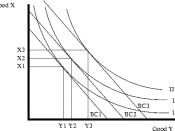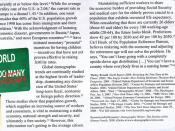The concept of consumer involvement during the last decade has received intensive and growing attention in consumer behavior research. There have been many definitions and conceptualizations of consumer involvement, but one of the most popular definitions was by Rothschild (1984): "involvement is a state of motivation, arousal or interest. This state exists in a process. It is driven by current external variables (situation, product and communication) and past internal variables (enduring, ego and central values). Central to the definition is the acknowledgement that "involvement is not a characteristic of the product itself but is contingent on the personal meaning the consumer assigns to the characteristics of the product" (Claeys & Abeele, 2001). The consequences of involvement are types of searching, information-processing, and decision making. Therefore we can also refer involvement to how much time, thought, and other resources consumers devote themselves to purchase process and decision making.
The involvement theory originates from hemispheral lateralization, or split-brain theory.
According to Schiffman and Kanuk (2000), the theory emphasizes on the specialized activities engaged by the two brain hemispheres. The left hemisphere is primarily responsible for cognitive activities such as reading, thinking and peaking. It engages in verbal, sequential, logical, analytical and rational processing. The right hemisphere, on the other hand, is mainly concerned with non-verbal, simultaneous, and intuitive processing, such as pictures and shapes. My research found out that people successful in seeking good health often engage more in left-brain activities and high involvement while people failing often engage in right-brain activities and low involvement.
I go to one of the local health stores occasionally. It's a small store selling organic food and supplement. I assume that people who go there take pretty good care of their health. There's something common they share while shopping there. They don't just grab and go.


